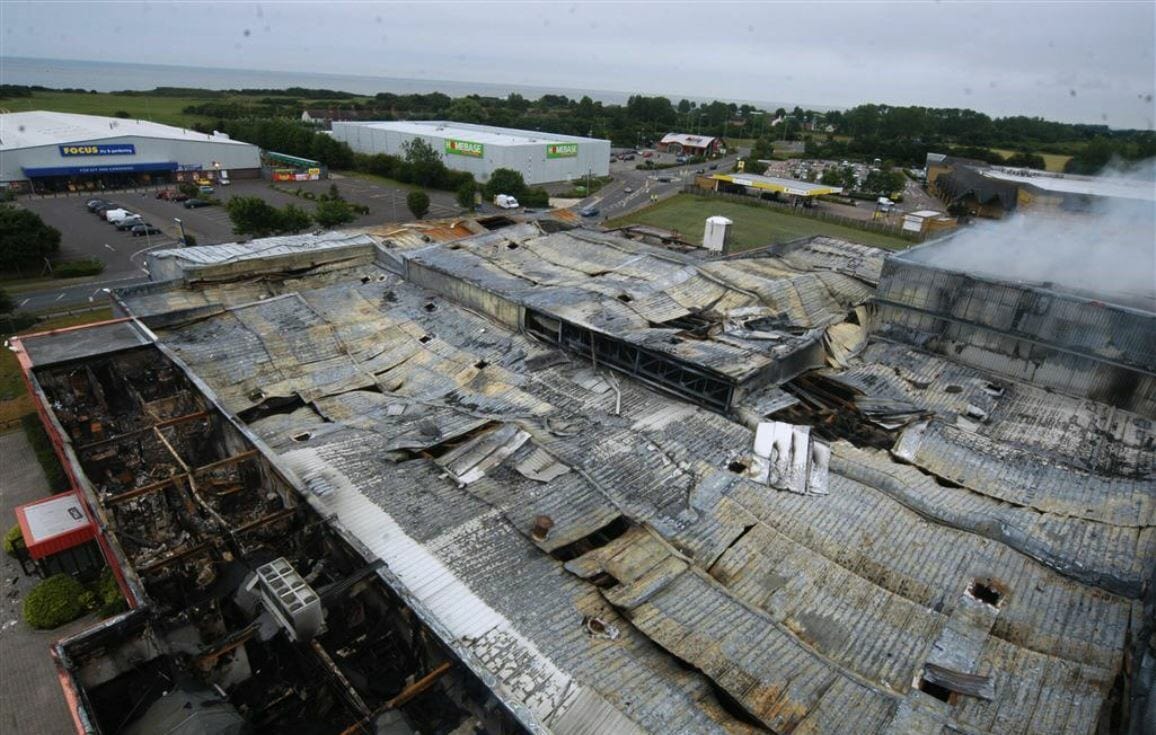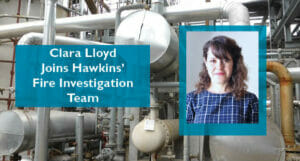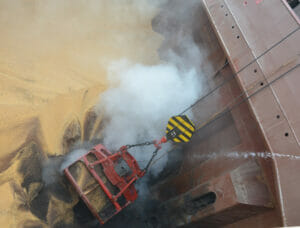The manufacturer of beef burgers suffered major damage at their factory when a fire broke out in the control panel of a defrosting unit. However, one of the main concerns of the insurers was why the fire managed to spread so quickly.
The Insured manufactured beef burgers in premises with walls constructed of sandwich panels insulated with foam and expanded polystyrene. A fire occurred at approximately 17:00 hours on a Sunday in July.
The Insured stored beef in chillers at -18°C before transferring it to a holding chiller in the centre of the building. The meat was then thawed in a commercial defrosting unit, to -3ºC. The defrosting unit incorporated banks of heating elements and a dehumidifier to raise the temperature of the meat slowly ready for processing. The meat was then processed in the mincing area and made into burgers before being chilled again ready for dispatch.
DISCOVERY
Processing of meat had stopped for the weekend on the Thursday before the fire and the thawing room was not in use and contained no product. The defrosting unit had been switched off using the toggle switches on the control panel, but not the main isolating switch.
On Sunday, a member of the Insured’s staff had noted that one of the -18ºC chillers was running ‘hot’ at -9ºC and therefore engineers were sent to rectify the fault. Having made their repairs, one of them left to go to the workshop plant or the engineers’ store to retrieve some equipment and it was whilst he was making his way there that he found a fire at the rear of one of the defrosting units. Having discovered the fire, the men raised the alarm and called the Fire Brigade.
The fire was also noticed by a Security Guard and soon after the fire alarm was activated.
INVESTIGATION
The damage sustained by the building was so severe that little remained to indicate where the fire started or how it spread through the building.
The investigation began in conjunction with representatives of Quinn Insurance and the Fire and Rescue Service. Interviews were held with the witnesses who had been on site at the time of the fire and the first fire crews to attend the building. This information provided us with an approximate area where the fire could have started.
We then retrieved data from the fire alarm panel to confirm the witness accounts and map out the rate of spread of fire through the building. The data showed that the fire had spread throughout the building in a few minutes and that the fastest spread of fire was in the roof void.
CCTV footage was obtained from the building at a later stage of the investigation and although it did not show the fire start or assist in the investigation, it did illustrate graphically the rapid spread of the fire owing to the construction of the building.
It was found that the contact faces of a relay in the control panel of the defrosting unit that served the 18 kW bank of heating elements had welded shut, which would cause the heating elements to remain energised at all times. More modern units have a second safety device, which prevents the heaters being energised (and therefore a fire occurring) even if the contactor fails.
It is not known when the fault occurred and whilst it might have been present at the time the last service was carried out, there was no way of proving this.
Clearance of the building by demolition contractors was arranged by Quinn Insurance to allow us access to the area where the fire started. Large steel elements of the roof, walkways and the supporting structure had to be removed carefully before we were able to examine the squashed remains of the defrosting unit.
Investigation of the remains of the defrosting unit where the fire was first seen revealed electric arcing damage on three heating elements, which was consistent with them being energised at the time of the fire. These heating elements were mounted in the rear right hand corner of the defrosting unit at a position roughly where the engineer reported seeing the flames.
Under normal operation the heating elements would not remain energised and could not be switched on if the air circulation fans were not rotating. However, the seizing or welding shut of the contact faces of a relay would bypass this safety interlock and mean that the heating elements remained switched on without the Insured’s staff being aware of the fault. This failure would also mean that the heating elements remained switched on even if the control thermostats were trying to isolate power to those heating elements. The result of this would be the uncontrolled heating of the elements in a small enclosed space which, given their proximity to polystyrene insulation, led to the ignition of the rear wall of the defrosting unit.
The heating elements were mounted 5-6cm from a sandwich panel constructed with expanded polystyrene insulation material. It is most likely that the fire was caused by the heating elements remaining energised since the defrosting unit had last been used three days previously and over time heated the rear panel of the defrosting unit to the point where the insulation material ignited.
FIRE SPREAD
The Fire Brigade reported that a significant quantity of the building was involved in fire at the time of their arrival. As a matter of policy for safety reasons (owing to the nature of the construction of the building) the Fire Service will not send fire-fighters into a building of this type to fight a fire unless lives are at risk. The fire would have spread rapidly between the metal elements of the sandwich panels in the building in such a manner that the Fire Brigade was unable to extinguish the fire by the application of water. The Brigade also experienced problems with low water pressure on site and requested an increase in water pressure from the Water Board.
The fire did not spread through the structure of the building owing to fire doors being left open as all the fire doors were fitted with self-closing devices and appeared to have been shut at the time of the fire. However, there were openings in walls between compartments where machinery was routed to transport the product around the building. There were also large openings in the building through which forklift trucks could pass and therefore whilst fire doors were shut, whether they were open or shut had little bearing on the spread of the fire. It was clear that the ammonia pipes for the refrigeration system had been insulated with expanded polystyrene and therefore they would have transmitted the spread of fire through any partition walls they traversed.
The spread of the fire was also assisted by an explosion reported by the witnesses and evidenced by a hole in the roof and cracks in the walls and collapsed ceilings at the front of the premises. Any explosion, which caused this amount of damage, would have caused severe damage to any partitions within the building and compromised any fire stopping that might have existed. It is most likely that the explosion was caused by the ignition of the products of combustion that were produced by the sandwich panel insulating materials.
CONCLUSIONS AND RECOMMENDATIONS
Quinn Insurance asked us to make recommendations to prevent any similar incidents in other plants operated by the owners of the Insured. These were:
- The Insured should inspect any defrosting unit units in their other factories to ensure they incorporate safety thermostats and if not, to retro fit them.
- The Insured should test all thermostats in their defrosting units and in particular the safety thermostats to ensure that they were functioning correctly.
- When the defrosting units were not in use, the factory staff should isolate the power to the units at the main isolating switch and if such a switch was not present, one should be fitted. This would ensure that the circumstances that caused the fire at this factory cannot be repeated, even if a safety device should fail.
- It might be prudent to replace the relays in the control panels of all defrosting units to ensure that they were all working properly.
- Any new construction should not incorporate expanded foam or polystyrene insulation material.
- Buildings should be compartmentalised adequately such that any fire is prevented from spreading. Whilst buildings might be compartmentalised at ground floor level, a considerable amount of fire spread can occur in the roof void as it did at the Insured premises. The installation of fire curtains or block work walls up to the underside of the roof structure can prevent fire spread.




